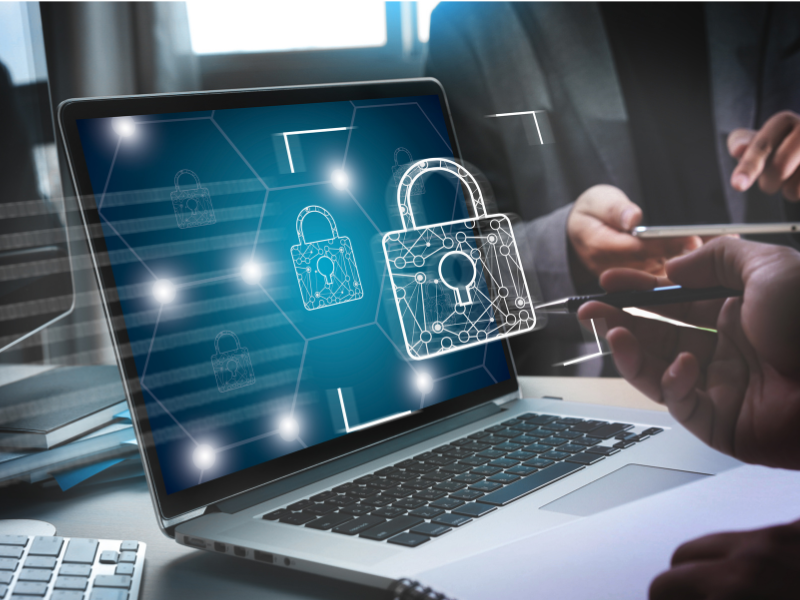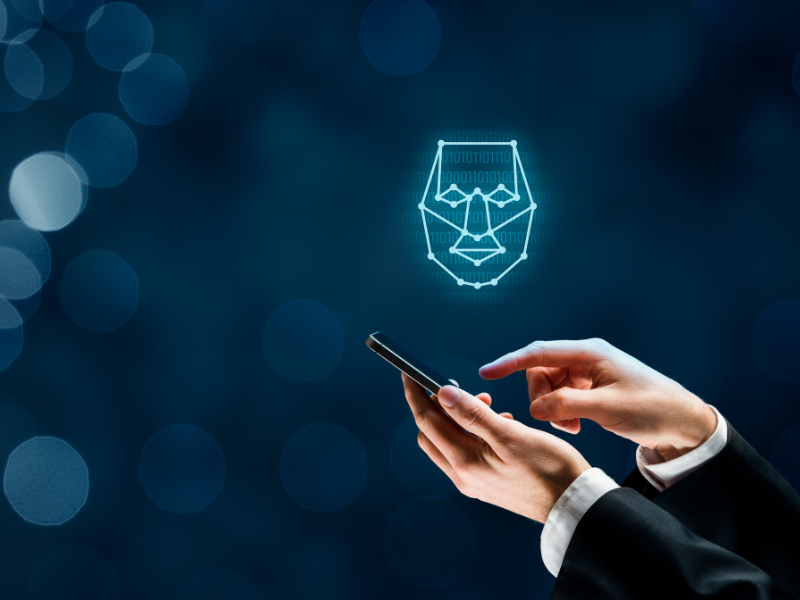Protecting our identities has never been more critical, especially as we rely on technology for everything from banking to healthcare. But how do we ensure that the person accessing sensitive information is truly who they claim to be? That’s where liveness detection steps in.
Key Takeaways
- Liveness detection is a biometric security process that verifies if the individual providing biometric data, such as a face or fingerprint, is a live person and not a fake representation.
- It plays a critical role in preventing identity fraud by ensuring that only genuine users can authenticate digital systems, especially in industries like banking, healthcare, and e-commerce.
- The technology utilizes active methods (requiring user interaction) and passive methods (analyzing biometric data without action) for dynamic and seamless verification.
- Techniques like facial movement detection, infrared scanning, texture analysis, and 3D sensing cameras enable robust, real-time fraud prevention.
- Despite challenges like false positives, false negatives, and adapting to sophisticated spoofing methods, advancements in AI and multimodal biometrics are driving enhanced accuracy and security.
- Integration with privacy-focused technologies and blockchain makes liveness detection increasingly reliable for secure, regulation-compliant authentication systems.
Liveness detection is transforming the way we approach security by verifying that a real, live person is present during authentication. It’s not just about matching a face to a photo—it’s about proving there’s an actual human behind the screen. This technology is becoming a cornerstone in combating fraud and securing digital interactions.
Let’s explore how liveness detection works, why it’s so essential, and how it’s shaping the future of secure authentication.
What Is Liveness Detection?
Liveness detection is a biometric security process that confirms whether a captured biometric sample, such as a face image or fingerprint, is from a live person rather than a fake representation. It differentiates between genuine individuals and fraudulent attempts using methods like photos, videos, or masks.
This technology often integrates with facial recognition systems to add an extra layer of verification. While facial recognition matches the scanned face to a stored template, liveness detection ensures the face is from a physically present person. For example, it can detect blinking, facial movements, or changes in depth to confirm authenticity.
There are two main types of liveness detection: active and passive. Active methods require user interaction, like moving their head or performing a specific gesture. Passive approaches analyze the face or biometric sample without requiring any input from the user, using algorithms to identify signs of life. Both methods play a critical role in digital security systems, especially in industries where identity verification is crucial.
Importance Of Liveness Detection
Liveness detection strengthens security by preventing the use of counterfeit biometric data, such as photos, videos, or masks, in authentication systems. Cybercriminals often exploit static biometric data, but liveness detection ensures that only genuine, live individuals can be authenticated.
This technology enhances trust in digital transactions across industries like banking, healthcare, and e-commerce. For instance, during online banking authentication, liveness detection confirms the customer’s physical presence, reducing identity fraud and protecting sensitive financial data.
By integrating with existing biometric systems, liveness detection improves compliance with regulations such as GDPR and CCPA. Many industries must adhere to strict data protection requirements, and liveness detection addresses the need for secure and reliable verification methods.
Organizations benefit from reduced fraud-related costs and improved customer satisfaction. Liveness detection creates a seamless yet secure user experience, offering strong protection without significant inconvenience. For example, passive methods enable effortless verification by analyzing data in real-time without requiring user interaction.
The growing adoption of digital identities makes liveness detection vital for maintaining trust and privacy. Whether accessing government services or managing health records, users need safeguards that ensure their identities aren’t duplicated or misused.
Techniques Used In Liveness Detection
Liveness detection leverages various advanced techniques to differentiate real individuals from fake biometric presentations. These techniques can be broadly categorized into software-based and hardware-based methods.
Software-Based Methods
Software-based methods analyze biometric data using machine learning algorithms to detect signs of a live human. These methods rely on complex pattern recognition and involve several key processes:
- Facial Movement Detection: This monitors micro-movements like blinking, smiling, or head tilts to determine if the subject is real.
- Texture Analysis: This examines skin texture using high-resolution imaging to identify inconsistencies in fake materials like masks or printed images.
- Light Reflection Analysis: This evaluates how light reflects on various surfaces, distinguishing real skin from synthetic replicas.
- 2D-to-3D Conversion: This reconstructs 3D depth data from 2D images to detect flat surfaces used in spoofing attempts, such as photos.
Software-only solutions are scalable and easy to integrate into existing systems but depend on the quality of the captured biometric data.
Hardware-Based Methods
Hardware-based methods use specialized devices to verify liveness by capturing additional biometric details during authentication. These methods typically include:
- Infrared Scanning: This detects heat patterns from a genuine human face, as fake materials don’t emit body heat.
- Fingerprint Scanners: These analyze unique properties like blood flow, pulse detection, or sweat gland activity to confirm a live finger.
- 3D Sensing Cameras: These capture depth data to differentiate live individuals from 2D images or videos.
- Ocular Scanners: These verify the presence of real eyes by examining pupil dilation and response to light stimuli.
Hardware-based methods provide robust security by adding extra biometric layers, although they require additional infrastructure investment.

Applications Of Liveness Detection
Liveness detection plays a crucial role in modern security systems by ensuring the presence of a real individual during biometric verification. Its applications span industries where identity protection and fraud prevention are critical.
Biometrics And Identity Verification
Liveness detection enhances biometric systems by verifying the authenticity of biometric inputs like facial features, fingerprints, and irises. When integrated with facial recognition, it distinguishes live individuals from static imagery or digital forgeries. This functionality is widely used in securing access to devices, ensuring accurate identity verification in border control, and streamlining onboarding processes in sectors like banking and telecommunications.
Fraud Prevention In Online Transactions
Liveness detection minimizes fraudulent activities during digital transactions by confirming a customer’s physical presence. This is particularly valuable in financial services, preventing identity theft and unauthorized account access. E-commerce platforms leverage it to verify users during high-value purchases, while payment gateways use it to reduce chargeback fraud. Its implementation ensures trust and security in sensitive online interactions, bolstering consumer confidence.
Challenges And Limitations
Liveness detection, though effective, faces several challenges in ensuring flawless performance. These limitations can impact its reliability and adaptability in dynamic, real-world situations.
False Positives And Negatives
Errors in liveness detection occur when the system incorrectly identifies inputs. False positives happen when the system validates a fraudulent sample, such as high-quality photos, masks, or spoof videos, as a live individual. False negatives arise when the system rejects legitimate users despite their presence. Such issues can result from poor environmental conditions, like uneven lighting and low camera resolution, or variances in user behavior. These inaccuracies undermine trust in the system while posing security risks, especially in critical sectors like banking and healthcare.
Adaptability To Emerging Threats
The technology struggles to keep pace with sophisticated spoofing techniques. Cybercriminals continue to develop advanced methods, such as deepfake videos and 3D-printed masks, to bypass biometric systems. This constant evolution forces the frequent upgrading of detection algorithms and hardware, which can increase operational costs. Additionally, ensuring seamless integration of enhanced systems with existing verification processes remains a significant challenge for organizations aiming to maintain robust security without affecting user experience.
Future Trends In Liveness Detection
Advancements in Artificial Intelligence (AI) are driving significant innovation in liveness detection. Improved machine learning models are enhancing accuracy by identifying subtle biometric patterns, such as microexpressions and natural behaviors, to distinguish between genuine users and advanced spoofing techniques. These AI-driven systems are increasingly capable of detecting complex fraud attempts, including deepfake videos and high-quality replicas.
Integration with multimodal biometrics is becoming more prevalent. By combining multiple biometric inputs, such as facial recognition, voice analysis, and fingerprint scanning, systems can provide stronger authentication. This layered approach reduces reliance on any single method, improving both security and usability for industries like healthcare and finance.
Real-time detection capabilities are gaining importance, especially in high-risk sectors. Evolving technology is enabling faster and more efficient analysis of biometric samples during authentication. This real-time processing ensures that fraudulent attempts are intercepted instantly, safeguarding sensitive transactions and systems.
Blockchain-based identity management is emerging as a complementary solution, offering decentralized and tamper-proof identity verification. When combined with liveness detection, blockchain provides enhanced transparency and security for digital interactions, supporting industries that depend on strong user authentication.
Adoption of privacy-preserving technologies is addressing regulatory concerns. New methods, such as federated learning and encrypted data processing, allow organizations to perform liveness detection without compromising user privacy. These technologies align with data protection laws like GDPR and strengthen trust in biometric authentication.
Enhanced usability features are contributing to wider acceptance. Developers are incorporating user-friendly interfaces and streamlining the integration of liveness detection into existing systems. For instance, passive detection methods are simplifying the process by removing the need for user interaction while maintaining high security standards.
Conclusion
Liveness detection is transforming how we safeguard digital identities, offering a powerful solution to combat fraud and enhance security. By ensuring only live individuals can access sensitive systems, this technology strengthens trust across industries and protects against evolving threats. As advancements in AI and biometrics continue to refine its capabilities, liveness detection is set to play an even more critical role in securing our digital interactions.
Frequently Asked Questions
What is liveness detection in biometric security?
Liveness detection is a security process that verifies if a biometric sample, like a face or fingerprint, comes from a real, live person rather than a fake medium, such as a photo or mask. It prevents identity fraud by ensuring only genuine individuals can access authentication systems.
Why is liveness detection important in banking and healthcare?
Liveness detection prevents fraudulent activities like identity theft, unauthorized access, and misuse of sensitive data. It ensures secure authentication during online transactions or accessing healthcare records, improving trust and compliance with data privacy regulations.
What are the main types of liveness detection?
There are two main types: active and passive. Active liveness detection requires user interaction, like blinking or smiling. Passive liveness detection analyzes biometric data without user input, relying on algorithms to verify authenticity.
How do software-based liveness detection methods work?
Software-based methods use AI and machine learning to analyze biometric features, such as facial movements, texture, light reflections, and 2D-to-3D conversions. They are scalable and easy to integrate with existing systems but depend on the quality of captured data.
What are hardware-based liveness detection techniques?
These methods use specialized devices like infrared scanners, 3D cameras, or fingerprint readers to capture detailed biometric information. While more secure, they require greater investment in infrastructure and equipment.
What industries commonly use liveness detection?
Industries like banking, healthcare, e-commerce, telecommunications, and border control widely adopt liveness detection to prevent fraud, verify identities, and ensure secure and trustworthy digital interactions.
How does liveness detection improve online transaction security?
Liveness detection verifies a user’s physical presence during authentication, minimizing fraud like identity theft or chargebacks. It ensures that only legitimate users can complete transactions, enhancing consumer trust and reducing risks.
What are the challenges of liveness detection?
Challenges include false positives (invalid samples being accepted) and false negatives (legitimate samples being rejected), environmental factors, and adapting to sophisticated spoofing techniques. These issues can complicate trust and system reliability.
How is AI improving liveness detection?
AI enhances accuracy by detecting subtle biometric patterns, such as microexpressions and natural behaviors. It also boosts real-time detection speeds, helping systems respond more effectively to spoofing attempts.
How does liveness detection protect user privacy?
Privacy-preserving technologies ensure that biometric data is analyzed and verified without exposing sensitive information. These methods comply with regulations like GDPR and CCPA, maintaining user privacy during authentication.
